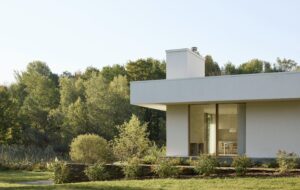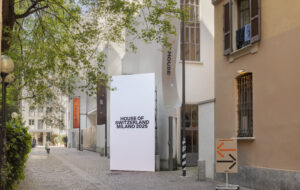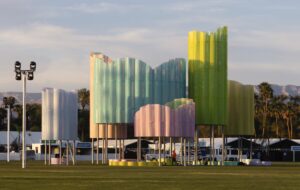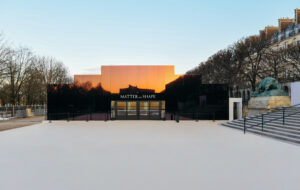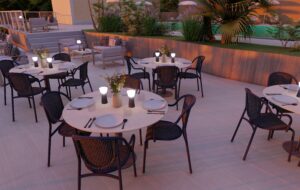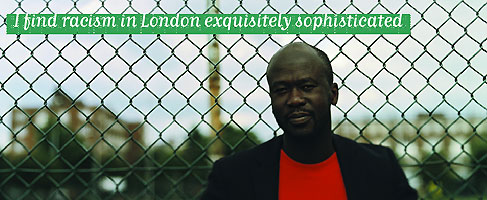
David Adjaye Graduating in ’93 was like being ejected into the void; it was the height of the crash. That forced me to start doing my own thing. I was born in Tanzania. I got here when I was ten, in the late Seventies. I studied at Middlesex and then the Royal College of Art. I got a teaching job and started doing anything: I was making furniture for people – it’s the classic story.
icon Many of your early projects were studios and houses for artists in Hoxton and the East End.
da The London art scene, that little explosion, was definitely my finishing school. What was amazing about the Nineties and the early Noughties was this incredible moment of renewed positivity, that potential for things to happen, which I’d never seen growing up in London. There was a kind of explosion of belief.
icon You were part of Hoxton’s gentrification. What do you think of the area now?
da The speed at which a place shifts, that’s been the great lesson really. The Dirty House [for artists Tim Noble and Sue Webster] was about a certain kind of austerity or brutality in that neighbourhood – and then an advertising agency opened on the other side of the road and Les Trois Garçons [an expensive French restaurant] opened behind it. It’s fascinating how the buildings become dislocated from the time that they were conceived and become almost like weird retinal after-effects that linger on in a gentrified neighbourhood, which is now about a certain bourgeois lifestyle, organic food and whatever else. I could never design a building like that there now.
icon Was there a quality of the city that you were trying to respond to with your houses?
da Yes. London is a Victorian landscape – a city for workers that has now been re-appropriated for an upwardly mobile middle class. There’s a hilarious contradiction between the plans set out by Victorian patrons and their inherited use. The social classes have morphed across the whole architectural stock. It’s interesting to me that an aristocrat would want to live in a Sixties penthouse building and an artist would want to live in a factory and a middle-class person would want to live in a Georgian house but wants to make it more like a Maine town house.
icon What was it like shifting to a public project in nearby Whitechapel?
da Well, as a young black male, for me what was interesting was that I didn’t have any disconnect. Being in a working class community brings you together with all the migrant and working class people that exist in a certain place. I could completely understand that working class life – families that felt completely ostracised by the sort of onslaught of Bangladeshi families or Ethiopian families. So when we did the community outreach I could talk to them, the working class white family, even though I was a black kid and maybe they didn’t even like me, I could at least make signals and sounds for them that they recognised as empathy.
icon Do you have any personal insights into this multiculturalism, or even racism?
da Racism now in London is a very sophisticated thing. Racism evolves just as social understanding evolves, and I find racism in London exquisitely sophisticated. If I was a scientist I would be totally fascinated by this.
icon You mean between racial subsets?
da Between racial subsets and also … English is a really beautiful language to layer things, but only if you are someone who has been brought up here can you understand the nuances. The nuances are different in the second generations. I see much more mixing in terms of ethnicity in second-generationists, they’re completely free in London, completely fluid. And then I see a very strange relationship with the children of white English people and how they negotiate with this
emergent group.
icon What do you think about the area that your office is in?
da You know, when I first came here this housing estate was so hardcore, there were burnt-out cars outside here almost every weekend. My staff would come and it would be like, my God, what the hell are you doing here, I can’t walk home when it’s dark. I liked the fact that it was on the edge of a kind of chaos. It has changed significantly but it’s still, by comparison to other places, rough. And it’s hard to believe that it’s right next to Islington but I think the estates around it keep it real as they say. But what I like about this place, unlike Notting Hill, where the working class was literally driven out, is that you just can’t see the council estates being completely colonised by the middle class.
icon Well, there are too many of them.
da Yes, and there’s this lovely exchange of both worlds and that’s what I love about this city. It contributes to a very active city life and a very non-lazy, non-accepted mode of operating. London does that better than most places, I must say. I love London more than I hate it, because of this incredible thing and I just hope we never lose it.
icon Are you still building much in London?
da It’s funny, because no one’s asking us to build in London any more. Maybe people think I’m too busy or something. I think there’s a season to be a London architect and then the city somehow ejects you into the world. But the fact that you’ve been in London becomes a very big calling card for you. I mean, it’s great to be asked to build abroad and everything but I want to build here.
This is where I’m from and what I do was developed here.

